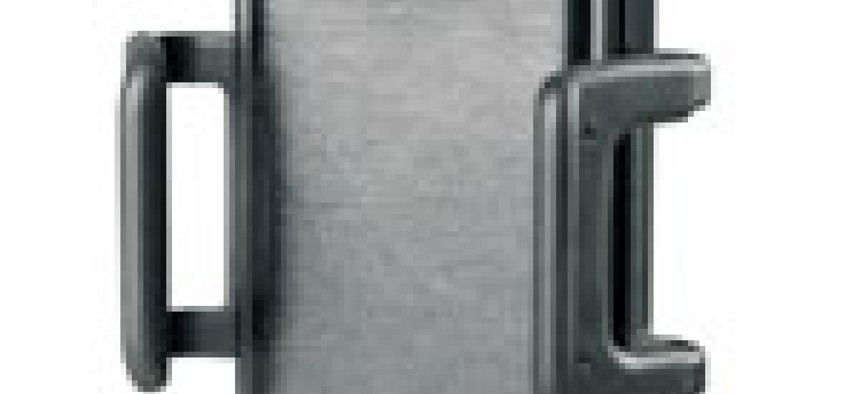On the range and out of range? This device can boost cellular signals.


Connecting state and local government leaders
The Wilson Sleek boosts cellular signals to make it easier to stay connected outside of metropolitan areas.
It might be hard for some to believe, but even in our modern age, there are regions of the county where the connected life still faces challenges. For some state and local government employees, it’s almost like 1975 when they hit the road into the less traveled, and therefore less cell-covered, areas of the country.
The Sleek Cell Phone Signal Booster, an in-car cellular signal booster made by Wilson Electronics, can help solve that problem. The Sleek is billed as a product that will reduce dropped calls and extend the usable range of a phone for voice and data transfers. Using technology that the company said will enhance communication capability by as much as 20 times the existing signal when in a vehicle, the Sleek is engineered to boost signal strength for uploads and downloads from available cellular towers.
Wilson Sleek
Pros: A useful product that can help those who live or work outside metropolitan areas.
Cons: A little clunky on a dashboard already becoming overcrowded.
Performance: A
Ease of Use: C
Features: B
Value: B
Price: $129 ($99.95 for government purchasers)
The problem that the Sleek seeks to remedy is easy to identify: Once you get outside metropolitan areas, cell phone service can become spotty at best. I drove cross-county several times last year, and it’s clear that the notion of total connectivity in the United States is a myth — in vast swaths of the nation, phone service is weak or nonexistent.
Although the Sleek won’t help in all cases, it can be a very useful item in areas where tower signals are few because of distance or obstructions, such as a prairie or rolling hills and mountains.
We tested the Sleek in two ways: first in rural southeast Ohio, far from any major city, and later on a multistate trip across the Appalachian Mountains. The aim was to apply some real-world difficulty in testing the Sleek’s ability to provide at least adequate connectivity.
Our assumption was that in an extremely rural area, the cell towers would be nonexistent or very far from the phone’s location. In the mountains, obstacles can create dead spots even on interstate roads. And, in fact, using just a cell phone with nothing to boost its signal, we found that to be true.
Traveling the roads with the Sleek was a different story. In both cases, the Sleek increased signal strength and overall reliability of calls we made while testing. We even went to an area in rural Ohio known to be a dead zone for all cellular networks, and we could make and receive calls there. The signal was weak, but the calls got through. The Sleek does its job well.
In addition, it helped improve data transfer speeds even in areas where coverage was mostly good.
The Sleek is well designed for vehicle use. The mount worked well when attached to a standard dashboard, and the design of the case fit several phones that we worked with, including a Droid, an iPhone and a BlackBerry. The hold was firm enough to prevent the devices from coming out of the grip without being difficult to remove when we exited the vehicle.
However, the Sleek does present some logistical difficulties. Although I can see the Sleek being useful for people who live their lives on the road, such as salesmen, truck drivers and engineers in the big-sky areas, the product presents some dashboard complications.
Adding the Sleek’s mount crowded an already-crowded console space even further. And finding a spot not only for the mount but also for running cable from the vehicle’s interior to the outside-mounted antenna provided further challenges. That’s not a huge problem, but in an era when in-car electronics such as Global Positioning System devices, satellite radio devices and personal MP3 players are beginning to take over that space, adding one more item to the mix is something that will need to be considered carefully.
There could be issues with available space, especially in smaller cars. However, Wilson has other antenna layouts available that can reduce the dashboard clutter by moving the device to other areas of the vehicle’s interior. Our tests were performed with the base model kit that was supplied to the GCN Lab.
The system is compatible with all cell phones and worked with every one we tested. However, the packaging does make clear that the Sleek will not work with the iDEN/Nextel phone system. Be warned.
The Sleek’s price is not prohibitive, but the $129 tab for a nongovernmental user targets high-end professionals or those with a true need. It’s not a price designed for the casual suburban commuter or text-happy teenager. For government clients, though, the price drops to $100, which could make the Sleek useful as a bulk purchase for agencies with a large number of staff members who travel independently.
Based on the results of our tests and other experiences with the Sleek, we have to give it our approval. The Sleek isn’t a product for everyone, but Wilson has defined a market need and done a good job of filling it. If you spend a significant amount of time in areas with cell tower coverage limited by distance or obstruction, the Sleek can be a real help for productivity, reliability and even safety.
Wilson Electronics, www.wilsonelectronics.com




